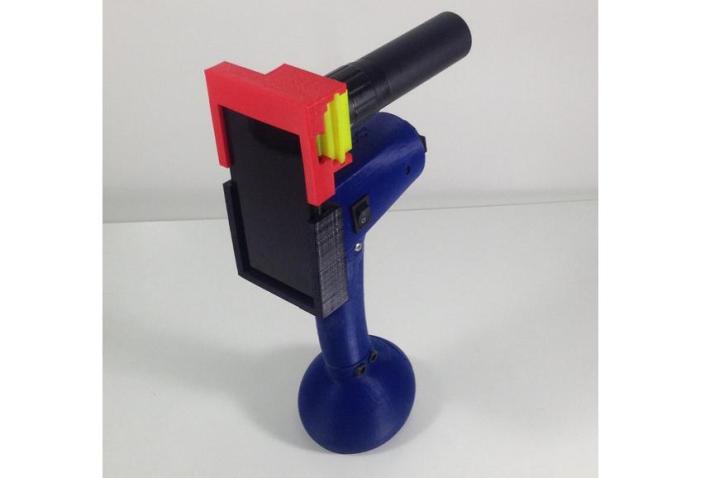
There are plenty of nifty smartphone accessories out there today, but how many of them can potentially save lives? MobileOCT is one of the latest startups to raise their hand to that question. The self-described “point-of-care diagnostics company” based in Tel Aviv, Israel, has developed a 3D printed smartphone accessory that leverages a mobile phone’s camera to detect cancer.
MobileOCT (pronounced “Mobile Oh-See-Tee” – the “OCT” stands for optical coherence tomography) is starting out by pushing its mobile colposcope, which is a magnifying device used to take images of the vagina or cervix. The company’s first target is cervical cancer, which takes the lives of more than 275,000 women each year, according to Cervical Cancer Action.
The $400 device comprises a case, colposcope, handle and adjustable lights. The case itself is 3D printed, which removes the cost and time involved with shipping.
“Our mission is to give anyone with access to a mobile phone the ability to save their lives and the lives of the people they love,” said Ariel Beery, CEO of MobileOCT, in an interview with BBC. “And the best way to do that is to make the hardware open source.”
Once an image is taken with the MobileOCT via the accompanying mobile app, the user can zoom in and out to make an assessment. The user can then tap a button to either “Not treat” or “Treat.” If they press “Treat,” the user can append the patient’s information to the image and upload it to the cloud, where it can be revisited or shared with other medical professionals.
MobileOCT is making cervical cancer its first priority because it’s the leading cause of death in low-resource areas of the world.
The company’s Indiegogo campaign, which closes on July 13, is aiming to raise $25,000.
MobileOCT is just one of the many ongoing endeavors to turn mobile phones into lifesaving devices.
Editors' Recommendations
- New 3D smartphone technology could change photography, experts say
- Qualcomm’s long-awaited second-gen 3D Sonic fingerprint sensor is 50% faster
- Facebook 3D Photos no longer requires Portrait mode on dual-camera phones
- The Qualcomm 3D Sonic Max fingerprint sensor lets you scan two fingers at once
- Doodles become augmented reality art with Snapchat’s new 3D Paint tool


